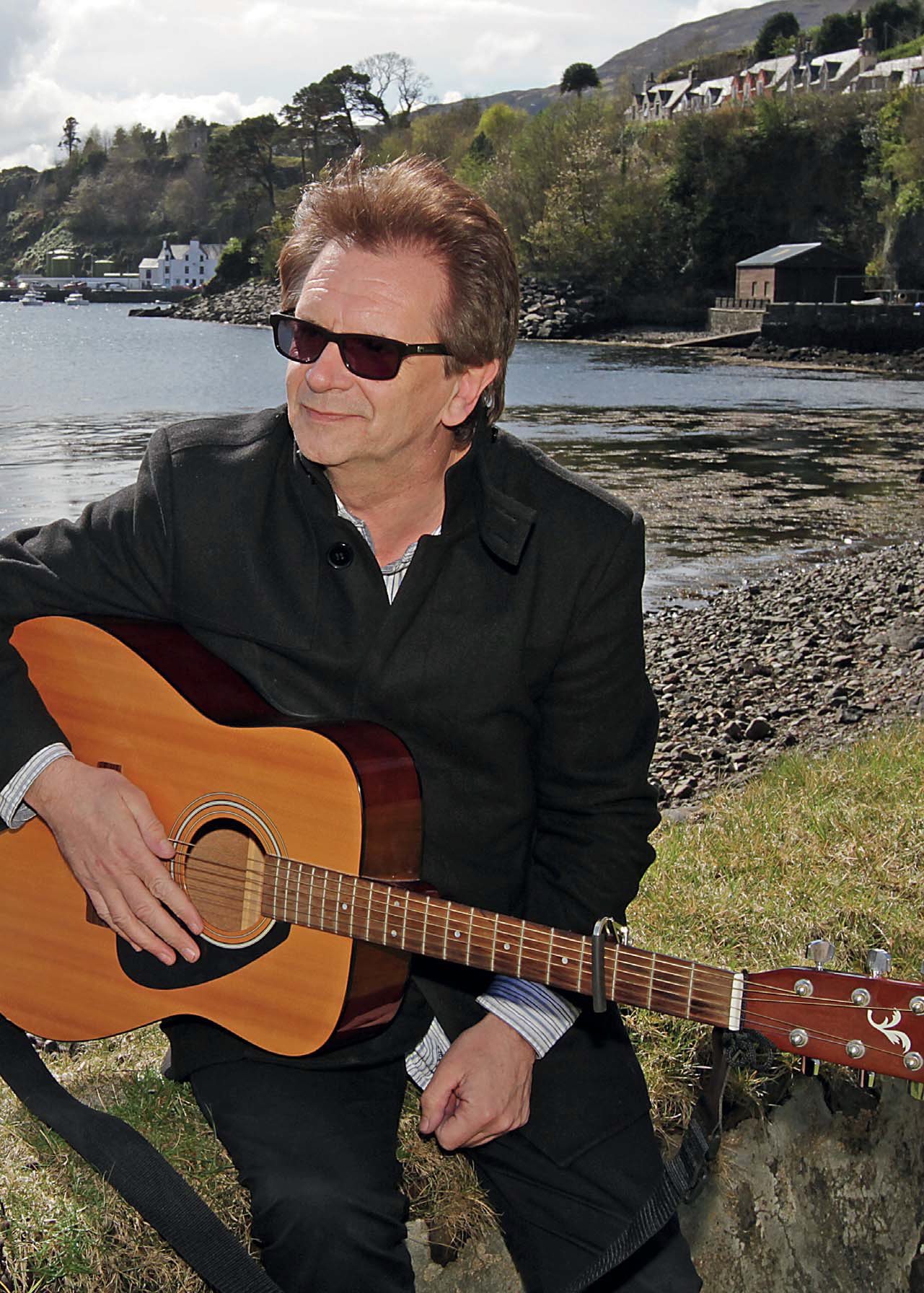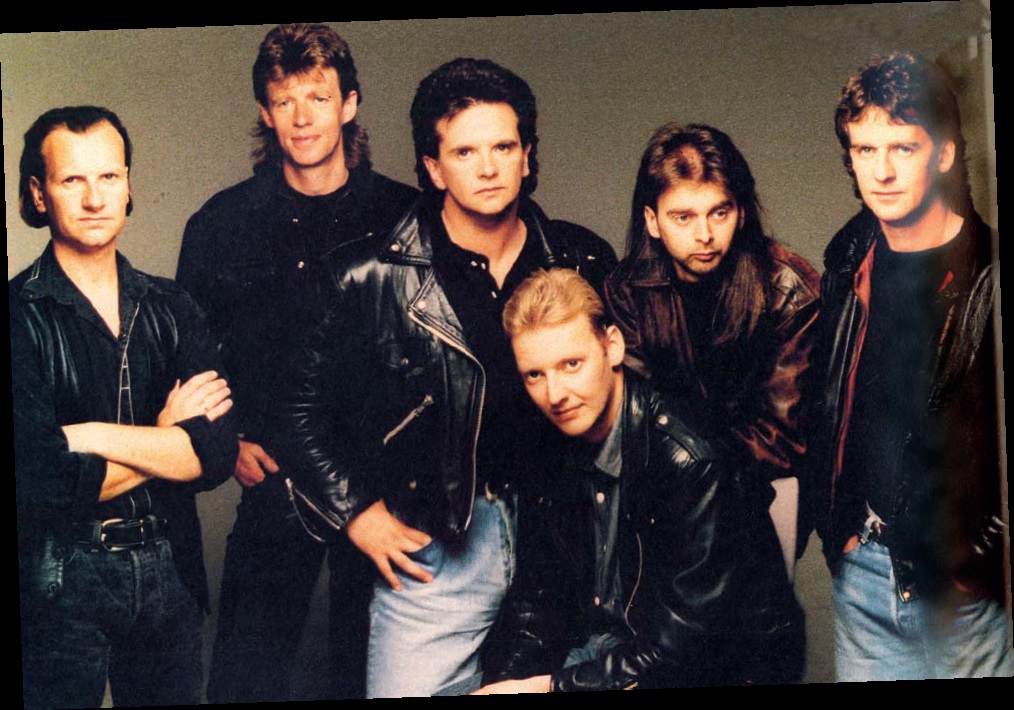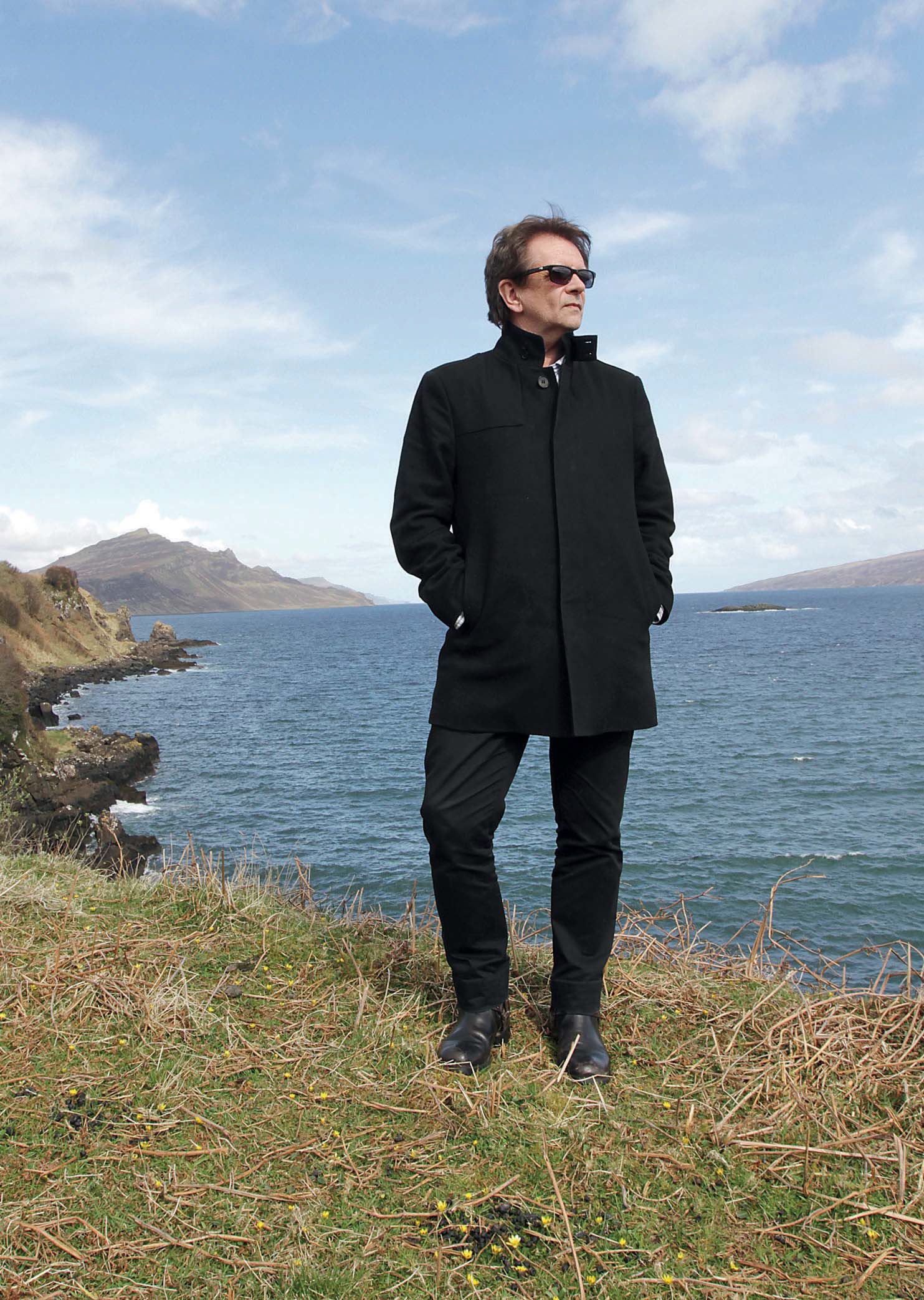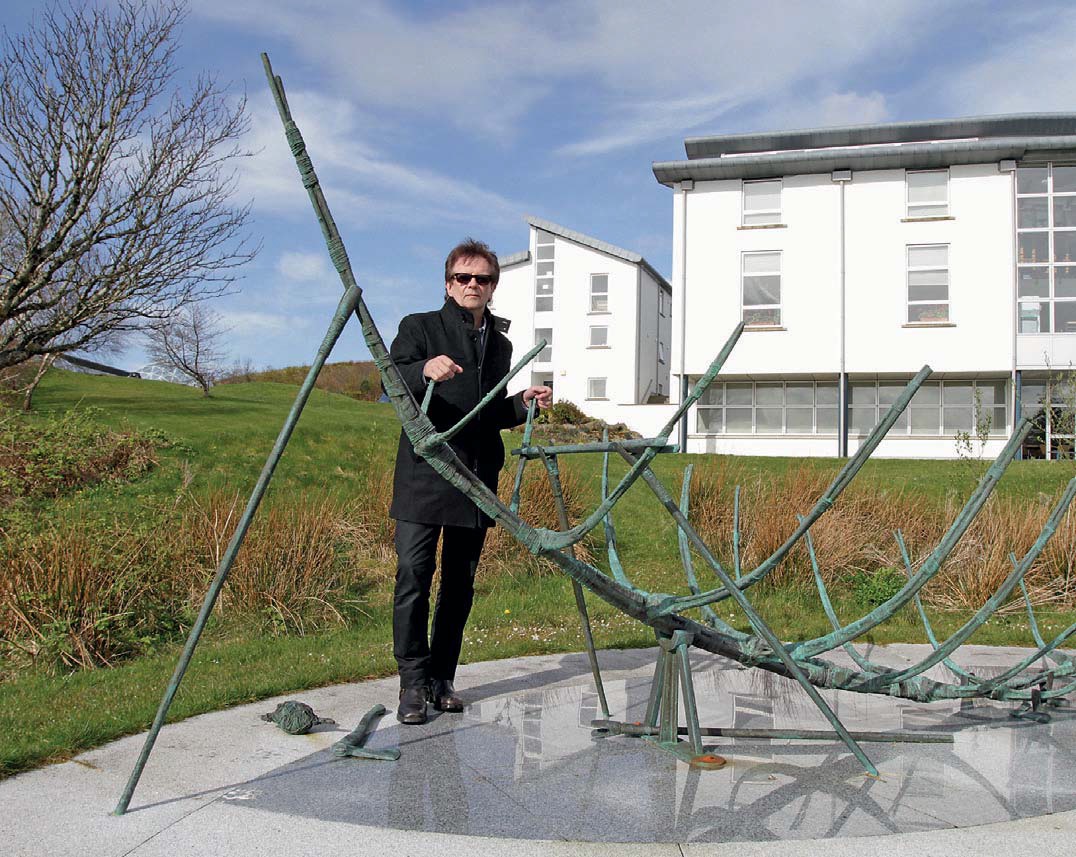
The life and times of Runrig’s Donnie Munro
Donnie Munro toured the world with his band Runrig but these days there is nowhere he’d rather be than home on Skye.
I was born in Uig on the north-west side of Skye, just like everyone else on the island who happened to be born before 1966. That was when a maternity hospital was built in the village of Portree, where I lived with my parents and my older brother and sister.
Although at that time it was probably populated mainly by Gaelic speakers, Gaelic was not the common language of Portree, which had been developed as a commercial centre under the patronage of the Macdonald estate.
All of the professionals – the bankers, lawyers, accountants and so on – spoke English, so English quickly established itself as the commercial language of the island. English was also the main language taught at school, with the curious anomaly that native Gaelic speakers were being taught in a language secondary to them. This was the culmination of a couple of centuries during which Highlanders had been dissuaded from seeing the merits of their own language and culture.
My parents’ generation did not view Gaelic as a language of opportunity and of course I had no custodial sense of the role of language and culture. Like most people around me, I embraced English-language rock and pop culture, while at the same time pretty much rejecting traditional Gaelic language and culture.
Thankfully, in retrospect, it was impossible to escape traditional culture completely. As a child I spent most of my holidays at my grandparents’ croft, in the village of Treaslane. It was a working croft, with crops and animals, and we’d help out by playing at being grown-ups.

Runrig’s Donnie Munro at home on Skye (Photo: Roy Summers)
When we helped put the hay in the byre, for example, we’d be allowed to jump on to it from the rafters to help squash it down.
So the real feature of growing up in Skye was the juxtaposing of traditional culture with the international, English-language-dominated pop and rock culture of young people. This is actually a pretty accurate description of Runrig, which started out as a dance band playing traditional Scottish dance music and rock and pop covers. At that time, as young students, we were doing paid gigs around the Highlands and islands, but we would evolve in time to become internationally known as the ‘Scottish Gaelic rock band’.
That transition probably wouldn’t have happened had we not, like so many other young islanders, had to leave Skye to continue our post-school education. It was while at university and college, as displaced Highlanders if you like, that we began to feel a sense of the worth and value of our unique cultural background.
This was also around the time that the radical campaigning newspaper the West Highland Free Press was starting, along with the 7:84 Theatre Company and the writings of James Hunter and other commentators, all of whom were discussing a Gaelic culture and social history that had been largely hidden from us.
Up until that point, we knew more about the adventures of Vasco da Gama than we did about the Land League movement in Skye. Indeed, I discovered later that my great-grandfather, John Matheson, actually gave evidence to the Napier Commission, a government-led investigation into the plight of the Highland people.
It is also interesting that in 1887 the people of Skye invited Michael Davitt, the founder of the Irish Land League, to speak to them on the issue of land. They met Davitt – an Irish Catholic and a convicted terrorist – and carried him shoulder-high like a returning hero because the land issue transcended politics and religion. I suddenly became aware that as well as being denied our socio-political history, we had also been denied our language and culture.

Runrig in their prime
It was a similar feeling that led Calum [Macdonald, co-founder of Runrig] to make the conscious decision to write a Gaelic song. He had been at a Highland wedding in Glasgow, where a Gaelic singer called Angus MacLeod from Scalpay had performed. It had a profound impact on him and he realised that this rich musical heritage that we had all but denied was not being used in a meaningful contemporary way. And because a deep sense of the melodic structure that stemmed from Gaelic music was embedded in our thinking, writing a Gaelic song came naturally to him.
We never saw Runrig as standard-bearers for the Gaelic revival, which is probably just as well because when we first came back to the Highlands and islands playing an entirely Gaelic set, we had a really difficult time. Instead of our audiences embracing their musical heritage, which is what we thought would happen, there was a backlash. In retrospect we were presenting a culture to people who, like us, had rejected it and still viewed it in a negative way.
Curiously, validation for what we were doing emerged from the cities of Scotland, where we toured the university circuit. It was here that Highlanders came along to support ‘their’ band, bringing with them a lot of non-Gaels and non-Highlanders, who really got into it. It was this validation that allowed our fans in the Highlands and islands to accept us.
It’s a nice bit of symmetry that in 1973, the year Runrig was formed, so too was the Gaelic college on Skye, the Sabhal Mòr Ostaig. It was founded by the late Sir Ian Noble, a successful banker and enthusiastic learner of Gaelic, who bought part of the Macdonald estate in Sleat with the vision of creating economic activity around the Gaelic language.
As well as employing Gaelic speakers, Noble also established a Gaelic college in an old farm steading, to train young people in specific skills as part of his wider aim of promoting business through the Gaelic language. At the time it was an incredible leap of faith because it was far in advance of the idea of Gaelic-medium education at any level. Even within the Gaelic community it was seen as quite eccentric. But, forty years on, the institution has had an enormous impact on business and culture and the development of the Gaelic language nationally.

Runrig’s Donnie Munro (Photo: Roy Summers)
I was first invited to join Sabhal Mòr Ostaig as a patron; I had been rector at Edinburgh University and I had quite a high profile with Runrig. I am now a director of development, fundraising and the arts, working on a wide range of projects and initiatives. I feel hugely privileged to have been a part of the success of the college over the last few years and its continuing success as a creative hub and a centre of academic, linguistic, research and cultural fields.
One of the most exciting initiatives is the Fàs building. Officially opened in 2008, it was designed to stimulate a critical mass of activities in the Gaelic arts, culture, broadcasting, new media and heritage. Chris Young, the producer of The Inbetweeners TV series, works from here and there is a TV studio and a recording studio and we are working with Creative Scotland to host the Creative Futures residency programme, representing four art forms: visual, music, drama and writing.
Sabhal Mòr Ostaig has had a huge stabilising effect on the local economy and population. Against national trends there has actually been inward migration to the Sleat peninsula, and an increase in the uptake of Gaelic language. And we are also, through an innovative partnership with the Clan Donald Lands Trust, Sleat Community Council and the Sleat Community Trust, on the cusp of getting the go-ahead to develop a new village at Kilbeg, which will be the first new village in Skye for over a hundred years.
As well as attracting new residents, Skye has always been a popular destination for tourists. In fact, Edinburgh aside, Skye is the most visited place in Scotland, and for good reason.
As well as the music, language and culture – exemplified by the annual Spring Feis and Highland Games – there is a rich heritage to explore, whether it’s the site of the Battle of the Braes, or the Museum of the Isles at Clan Donald, a superb experience that looks at the reach of Clan Donald during their Lordship of the Isles.

Donnie at Sabhal Mòr Ostaig, where he is a director of development, fundraising and the arts. (Photo: Roy Summers)
Skye has an incredibly diverse landscape, dominated in its centre by the Cuillins, which have attracted walkers and rock climbers since Victorian times. The north of the island is quite dramatic, while the south is more pastoral and wooded. There are also a number of fantastic places to visit around its extensive coastline, such as the coral beach at Claigan, and the beaches at Camas Daraich and Glen Brittle.
Skye also has a fabulous reputation for its food. The island offers a tremendous wealth of freshly caught seafood, along with a range of world-class restaurants – including Kinloch Lodge, The Three Chimneys, Duisdale House and Toravaig House – all taking advantage of the high-quality local produce.
Until fairly recently Skye was in denial of its heritage, language and culture. The great Gaelic revival, helped in no small measure by the work of Sabhal Mòr Ostaig, has breathed new life and confidence into all areas tied to the language, culture and people of this wonderful place. So, like Runrig, Skye to me is the perfect balance of the old and the new.
(This feature was originally published in 2012)
TAGS

